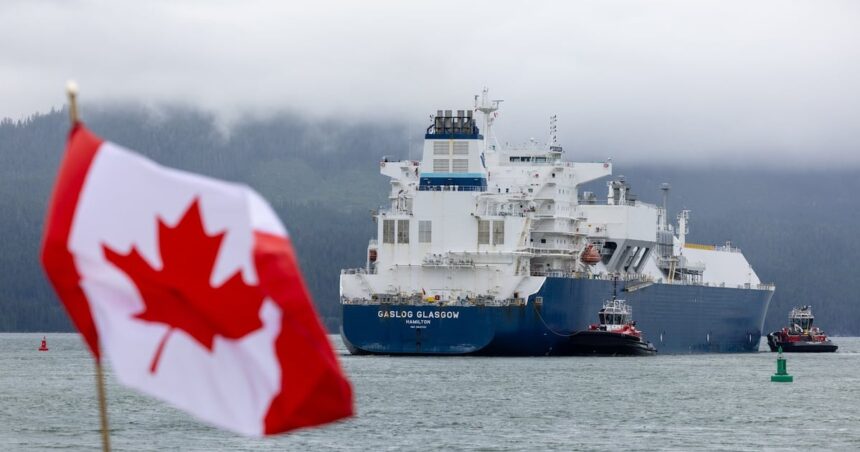The winds of change are blowing through Alberta’s natural gas sector, and Calgary residents might soon feel the effects in their wallets. After years of basement-dwelling prices that have frustrated producers and pleased consumers, our province’s natural gas fortunes appear poised for a significant shift in 2025.
I’ve spent the last week speaking with industry analysts, local energy executives, and economic forecasters to understand what this means for everyday Calgarians. The picture that’s emerging suggests we’re at an inflection point that could reshape our energy landscape for years to come.
According to Deloitte’s latest market forecast, Alberta natural gas prices are expected to climb by roughly 30 percent next year, primarily driven by the province’s first major liquefied natural gas (LNG) exports. This represents the most substantial price increase we’ve seen in nearly a decade.
“The Western Canadian market has been essentially landlocked for years,” explained Sarah Mortimer, senior energy analyst at Deloitte Canada. “LNG Canada’s export terminal coming online changes the equation fundamentally by connecting Alberta’s vast gas reserves to premium Asian markets for the first time.”
The $40 billion LNG Canada facility in Kitimat, B.C. is approaching completion and will begin shipping Alberta gas to overseas markets by mid-2025. At full capacity, the terminal will export approximately 14 million tonnes of LNG annually—equivalent to about 20 percent of Canada’s current natural gas production.
For Calgary’s major natural gas producers like Tourmaline Oil Corp and Canadian Natural Resources, this represents a welcome lifeline after years of challenging market conditions. Since 2017, the AECO benchmark price for Alberta natural gas has frequently traded below $2 per gigajoule—sometimes dipping as low as 10 cents during pipeline maintenance periods.
“We’ve been waiting for this export capacity for over a decade,” said Thomas Reynolds, CEO of Calgary-based Birchcliff Energy, during an industry conference last week. “The ability to access global markets means we can finally realize fair value for our resources rather than being held captive to North American price dynamics.”
But what does this mean for everyday Calgarians?
The Alberta Utilities Commission estimates that the average Calgary household uses approximately 120 gigajoules of natural gas annually for home heating. With Deloitte forecasting AECO prices to rise from the current $2.25 per gigajoule to around $3.25 by late 2025, typical residential heating bills could increase by $120-150 annually.
Emma Crawford, consumer advocate with the Alberta Energy Consumer Protection Association, told me she’s concerned about the timing. “This price increase will coincide with what economists are predicting will be continued high interest rates and stubborn inflation in other essential categories,” she said. “For families already stretched thin, another $10-15 per month matters.”
The City of Calgary’s economic development office takes a different view. Their latest economic impact assessment suggests the price recovery will generate approximately 3,200 new direct and indirect jobs in the Calgary region, primarily in the engineering, financial services, and energy sectors that form the backbone of our downtown core.
“There’s a balance here between consumer costs and broader economic benefits,” noted Dr. Harpreet Singh, economist with the University of Calgary’s School of Public Policy. “Higher gas prices mean more investment, more royalty revenue for provincial coffers, and ultimately more economic activity in a sector that’s critical to Calgary’s prosperity.”
The provincial government stands to be another major beneficiary. Alberta Energy Ministry projections indicate that each $1 increase in the AECO natural gas price generates approximately $500 million in additional annual royalty revenue. Those funds could potentially support infrastructure projects, healthcare, or even tax relief in other areas.
For small business owners like Sarah Jennings, who operates three local restaurants, the cost implications are significant but manageable. “We budget about $25,000 annually for natural gas across our locations,” she explained. “A 30 percent increase means finding about $7,500 somewhere else in our operating budget. It’s not catastrophic, but it’s definitely not helpful in an industry with razor-thin margins.”
The price increase also comes with environmental considerations. Environmental advocates worry that higher prices will accelerate development in Alberta’s natural gas fields, particularly in the Montney and Duvernay formations. The Pembina Institute estimates that meeting export commitments could require drilling up to 2,500 new wells over the next five years.
“There are significant water usage and methane emission concerns with expanded drilling,” said Michael Carpenter of the Alberta Environmental Network. “If we’re going to see increased production, we need matching increases in regulatory oversight and emissions monitoring.”
Industry representatives counter that Canadian LNG exports actually represent a net environmental positive on a global scale. When our natural gas displaces coal in Asian markets, particularly China and Japan, the greenhouse gas reduction can be substantial—up to 50 percent less carbon dioxide per unit of electricity generated.
Walking through downtown Calgary yesterday, I couldn’t help but notice the buzz of activity around the energy company headquarters that has been missing in recent years. Engineering firms are staffing up for new gas field developments, and service companies are investing in equipment to support the expected drilling surge.
For a city that has weathered tough economic times since the oil price crash of 2014-15, this renewed activity represents a welcome shot of optimism. The question remains whether the benefits of higher gas prices and increased economic activity will outweigh the costs to consumers already struggling with inflation.
As we move toward 2025, one thing is certain: Calgary’s energy landscape is changing once again, and we’ll all be adjusting to a new normal in natural gas markets that have local impacts but global connections.







